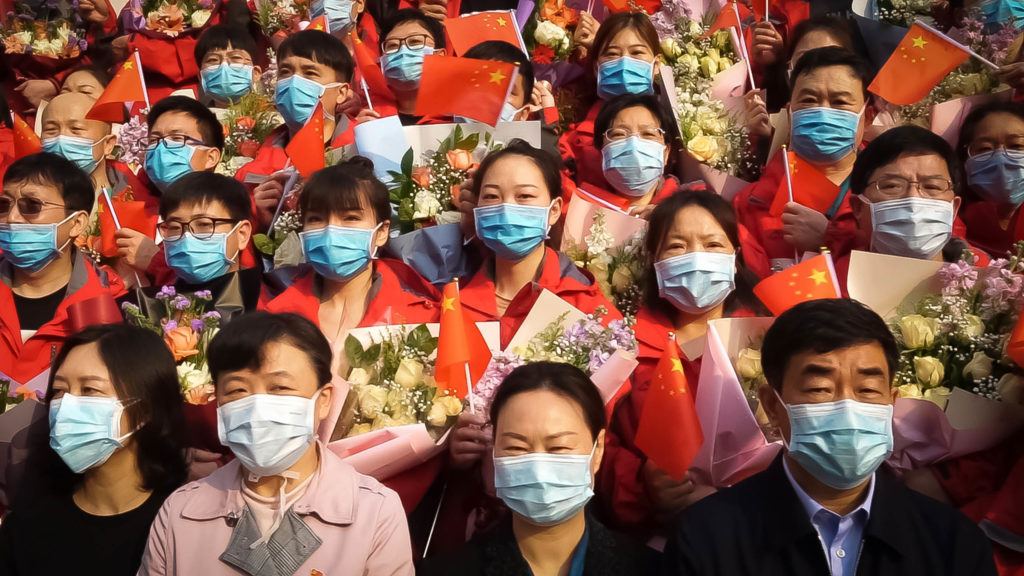In The Same Breath

IN THE SAME BREATH by Nanfu Wang. Image courtesy Sundance Institute.
As Wuhan celebrated the new year, ushered in for the ninth year by the jingoisms of Xi Jinping and the Chinese Communist Party, an alarming message almost went unnoticed: “Eight people were arrested for spreading rumors about an unknown pneumonia.”
The eight were doctors who saw patients rapidly declining and dying from SARS-CoV-2, a coronavirus variant that initially presented with cold or flu-like symptoms. In the year of the rat, the Chinese people were witness to the emergence of a new kind of plague—one that’s killed over 2.3 million people worldwide.
Director/producer Nanfu Wang, living in the United States for the past nine years with her husband and child, returns annually to visit her parents in China. While the world heard that China’s nationalized system reacted swiftly to the outbreak, Wang saw a different side to the story curated by state-owned media.
IN THE SAME BREATH appears to take its title from Wang’s thesis that Chinese and Americans alike had spent the year under a cloud of disinformation and propaganda from their respective regimes.
From the beginning, both governments fixated on the perception of accomplishment and the corralling of public opinion as a means to protect the autocratic leadership of Jinping and Trump. Through a series of attempted interviews with healthcare professionals and patients, deft undercover camerawork in and around hospitals and crematoriums, and thorough research on coordinated propaganda, Wang demonstrates how attempts to downplay the virus exacerbated the pandemic both by missing key opportunities to limit the spread and by creating conflicting narratives with the day-by-day change in each administration’s response to the growing threat.
Wang finds more success with Chen Runzhen, the owner of a private clinic. Security footage shows patient after patient presenting with similar symptoms—chest pain, shortness of breath, fever—all within four days of each other in late December. Clearly something was awry. But it wasn’t until after the new CCP Congress convened in late January that the Chinese government acknowledged the virus, followed by a coordinated shift toward spinning the botched effort into a story of heroic perseverance.
“I remember these stories of people overcoming advertsity,” Wang narrates, “But I don’t remember ever questioming where the adversity came from. When the government is telling us to look, they’re also telling us where not to look.”
By this time, the Trump administration’s denial campaign stateside took off. As recently as yesterday, the Washington Post writes that the Health and Human Services Office of Special Counsel finds initial evacuation of American nationals from Wuhan was so poorly handled, it contributed to the acceleration of the virus in the United States.
While sure to be a bombshell due to the tight censorship of Chinese media—an investigative journalist, Chen Qiushi, disappears a couple days after interviewing a healthcare worker who says that China grossly underreports casualties by the tens of thousands—Wang deftly empathizes with the families stuck in this hell on both sides of the Pacific. She parallels the sudden progression from initial cases to full lockdown in New York and Wuhan, and examines the different ways in which our distrust of government manifests.
Both China and the United States have so maligned the free press as “enemies of the people” that we’re paradoxically conditioned to yearn for the simplicity of spoon-fed positivity over the difficult work of watching the watchmen.
“In both systems,” Wang concludes, “ordinary citizens become casualties of our leaders’ pursuit of power.”